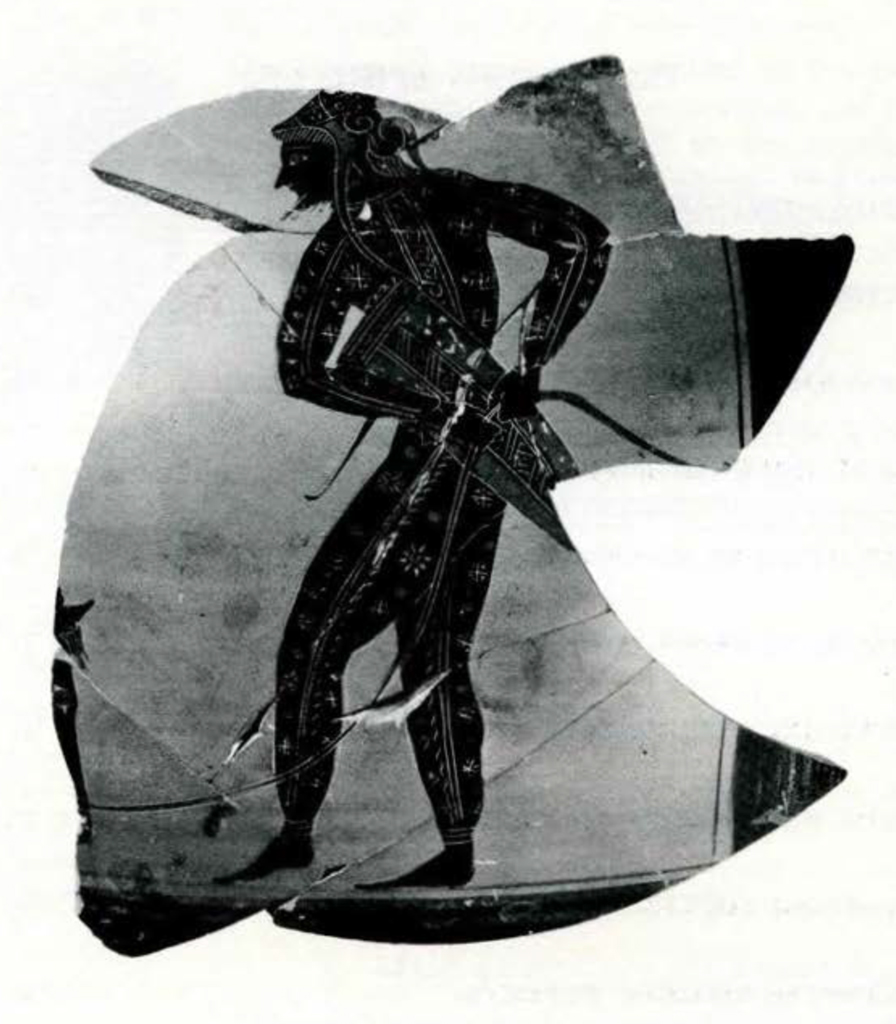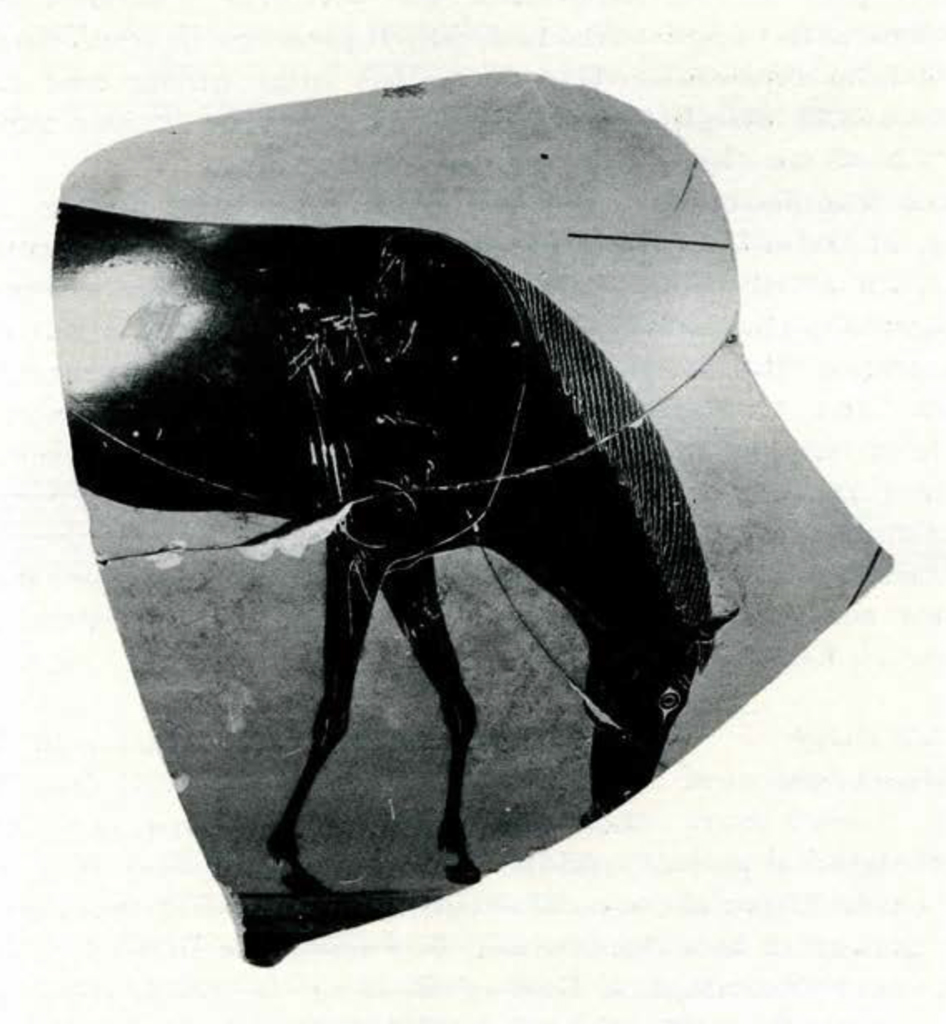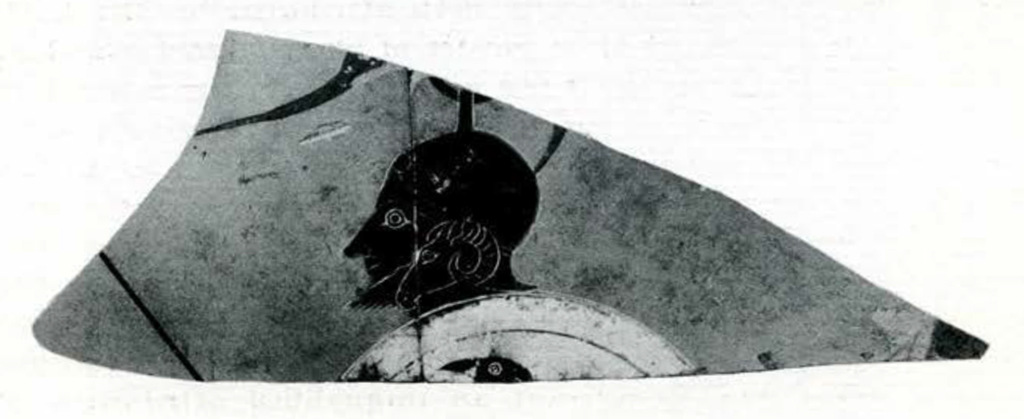AMONG the most beautiful fragments of painted vases, from Orvieto, Italy, which were acquired in 1897 with the consent of the Italian Government, are the pieces of a black-figured amphora, on both obverse and reverse panels of which were painted a grazing horse and a warrior. From the obverse panel is preserved on one fragment [Plate IV] most of the horse, and on two other fragments (one of them shown in Figure A) the head and part of the shield and garment of the warrior who holds the horse’s ‘lunge-line.’ From the reverse panel very little of the horse is preserved, but almost the entire figure of the attendant, an archer in oriental costume, together with a small portion of the horse’s head [Plate I].

Museum Object Number: MS4873B
Image Number: 2797

Museum Object Number: MS4873A
Image Number: 2798
There is a sober beauty about these figures that is uuforgettable: horses quietly grazing, and men leaning easily forward to give more play to the ‘lunge-line’ but alert for a sudden movement. The artist apparently took much pleasure in rendering the archer’s long embroidered trousers, his huge quiver and tailed headdress, and delighted too in the cheek-piece in the form of a ram’s head on the helmet of the warrior.

Museum Object Number: MS4873A
Image Number: 2799-2800
These fragments have recently been attributed by Mr. J. D. Beazley, of Oxford, to the great master of black-figured painting, Exekias, an attribution which not only enhances the interest of the fragments themselves, but also, to the present writer’s mind makes certain the attribution to Exekias of another vase in the Museum, the Antilochos amphora. Furtwaengler was the first to connect this amphora with Exekias, and Mr. Beazley has also associated it with him, saying that it ‘may well be from the painter’s own hand.’ The very close resemblance of the large white shield, with its blazon of a bird, to a shield on the Antilochos amphora seems now to warrant an unqualified attribution of this vase to Exekias.
E. H. D.

